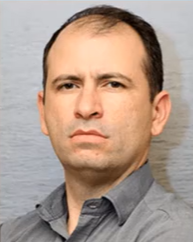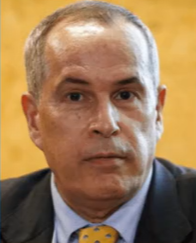Presented by:

This article appears in the E&P newsletter. Subscribe to the E&P newsletter here.
As new oilfield discoveries make headlines and take center stage as they bring productivity increases for operators, mature fields tend to fall into the background. Deemed declining in productivity, many Brazilian operators overlook mature fields in favor of shiny new oil fields, but doing so could be wasting potential drilling opportunities and revenue for their companies.
Panelists on SPE Live’s recent webinar “Mature Fields in Brazil: Opportunities and Technologies” shared their thoughts on the productivity of mature fields and opportunities that lie within.

To those who think that Brazil’s mature fields are no longer worth investing in, Petrorio COO Francilmar Fernandes would say otherwise.
“Brazil nowadays, it [has] many opportunities for mature fields," Fernandes said. "We have those in dozens of fields that are just ready to change off the hands of the major and supermajor independent companies. Petrorio just started this journey five years ago, and we [have been] just collecting very good results since then. We have many, many opportunities ... [and are] focusing in fields to use new technologies, to use new ways to produce with lower cost and with more high operational efficiency.”
Fernandes said that one of the company’s primary focuses in terms of technology was focusing on digitalization.
“We need to [create] more energy in this way to increase our efficiency and so on,” he added.

Innovative solutions
To reinvigorate older fields so they can produce on par with new fields, operators need to invest in technological innovations. Fernandes stressed the importance of deploying new technologies—and a lot of it—to revamp mature fields.
“For mature fields, we really need more and more technology in all the areas,” he said. “Since the well construction, we need more productivity per well with a lower possible per well, maybe more laterals, maybe more directionals to really choose without pilot holes and so on from going to the top side system or with more sensors, with more IOTs to reduce the POP [persistent organic pollutant] on board and so on, so forth. So we have many, many opportunities, but the critical point is we have [to have] the right technology with the right price [which] has to be economically feasible.”

Décio Fabricio Oddone da Costa, CEO of Enauta, added that the technological innovations would not only help improve operators’ own productivity in their mature fields but keep them competitive in the world market. Norway, for instance, has spent a considerable amount of time and resources developing mature fields, and Brazilian operators don’t want to fall behind in productivity levels.
“We are in the middle of the beginning of enormous technology transformation, [with] all this big data digitalization [and] artificial intelligence,” Oddone da Costa said. “This will change the way we drill and the way we collect data and the way we produce oil fields. And I'm quite sure that those recovery factors that we heard often are currently being achieved in Norway. They also have the numbers that we have as goals in Brazil in the years to come.”
Norwegian oil recovery
In Norway, operators are making headway in recovering their mature fields and therefore getting the most revenue and productivity out of the fields, a strategy that Brazilian operators hope to mimic.
Maria Clara Costa, who focuses on petroleum technology IOR at Equinor Brasil, shared that Norwegian developers were able to expand the production life span of a fjord from 2022 to at least 2027 and possibly 2040.

“The recovery factor is very low in Brazil, but then we see Norway," Costa said. "The average we have on plans for our fields is 50% [of recovery] from Equinor, and we have the ambition to reach 60%. That's the ambition we have, and keeping the production level that we have today until 2025 and beyond.”
She continued, “We are also seeing fundamental change in the industry faster than ever before, especially since last year, and the energy transition and the need for a low-carbon future is posing new ways of working, new ways of thinking, especially for the mature fields, and that's not different in Brazil."
Costa also pointed to leadership in the industry and the path forward during this transition.
“We aim to set an example of how the oil and gas industry must develop and also show the leadership and point a way to bolder and better solutions," she said. "That's why we are actively shaping our portfolio to deliver high value and a low-carbon footprint.”
Incentivizing revitalizing mature fields
The government in Brazil has begun putting in place incentives for revamping mature fields, as increasing recovery in already developed fields generally costs more money but is more environmentally friendly, Oddone da Costa said.
“I couldn't think in a different way that we have made a lot of progress in Brazil in the past few years,” he said. “The government and the agency, they put in place a series of measures that help the industry to operate in these mature fields initially. Now I would say that we have the conditions in Brazil for the independent operators to come and to take over these mature fields.”
